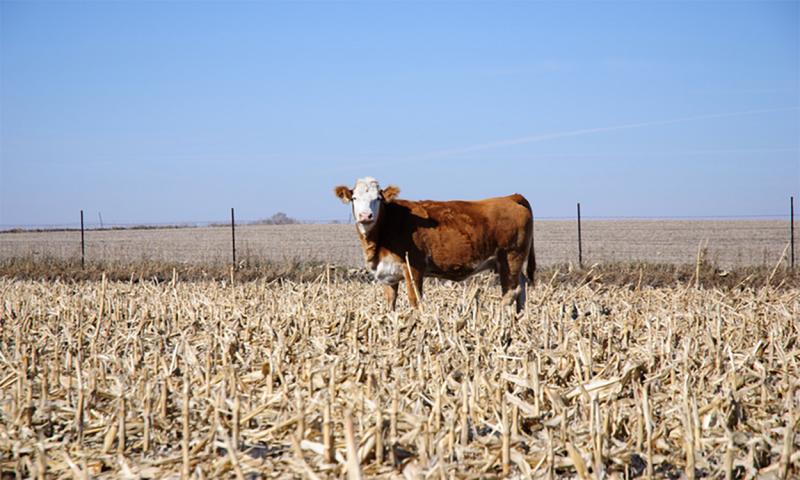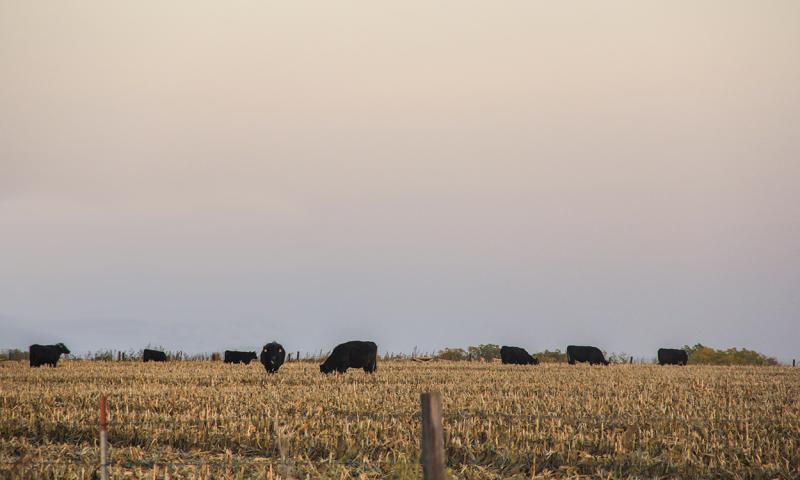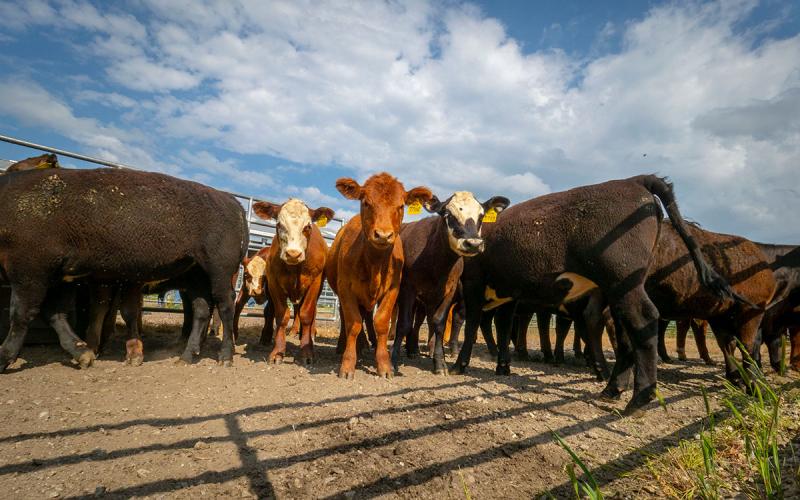Grazing corn stalks is a common sight in South Dakota. Following the corn harvest, a grazing animal can pick up the remaining husks, leaves, stalks, and corn. This low-cost feed option can also get the herd off pastures and save harvested forages for winter use.
One reason for not grazing corn stalks is, “I always lose at least one cow when I graze corn stalks.” Death losses increase the total expense of grazing, a relatively inexpensive feed resource. However, there are management practices to reduce or eliminate these losses.
Management Tips Before Grazing

Death loss on stalks is generally due to the overload of corn in a rumen that has been grazing forages all summer. The rumen cannot adjust to a dramatic change in diet overnight.
Before turning cows out on stalks, ensure the animal has a full belly. Provide hay or other forages in the pasture or dry lot before you turn them into the field, so they do not overeat on ear corn. Ensuring the cow is full will reduce the feed she needs to consume that first day on the stalks.
Drive around the headlands of the field and scoop up any piles that miscommunications between the combine, grain cart, and semis may have caused. Discuss any potential spills in the field with the landowner if you rent corn stalks. If only one or two cows find that pile, they will likely eat it all and suffer from potentially terminal acidosis.
Nutrition Considerations
Depending on the length of the stalk grazing season, ensure the cows' nutritional needs are met. Water, salt, and protein are some leading nutrients that need monitoring.
Water sources may vary from a dugout or slough to tire tanks with rural water. Each must be monitored to ensure quality water is provided throughout the grazing season. Dry conditions can deteriorate the availability of natural water resources, and winter weather can freeze all water options.

Many beef nutritionists consider salt an “always” nutritional resource and recommend feeding cows corn stalks.
As cows graze stalks for extended periods, the corn on the ground will decrease. As the grain is removed, the cows will need a protein supplement to help them utilize the forages in the husks, leaves, and stalks. The type of protein source you choose will vary in price and delivery method, so evaluate the best decision for your operation.
Turning cows into stalks is a simple way to keep your mid-gestation feed costs low. Cows in mid-gestation after weaning need average-quality feed. The corn they pick up will help them regain some of the weight they lost by nursing a calf. The cows clean up fallen corn, resulting in less volunteer corn next summer. Lastly, as a manure management plan, cows eating in the field helps keep dry lots cleaner, reduces the amount of manure spreading in the field later, and incorporates organic matter into the soil.


